Why You Should Depersonalize Your Marketing in 2021

Marketers have been thinking about, arguing over, and implementing personalization tactics for the last few years. So why in the world would I promote depersonalized marketing?
If you’re like most eager marketers, you’re are trying to keep up with personalization. You may have tried retargeting, creating highly-targeted landing pages, and using dynamic ads.
You are digesting as much content as you can. You’re testing all of the newest tips, tricks, and strategies you can find.
But there’s a problem.
While some of those tips are good, others do little to increase your overall ROI.
Which is exactly the point of personalization strategies. So what’s the issue?
The problem isn’t personalization itself. The problem is with how we think about personalization.
In fact, personalization works. Sometimes.
Why Personalization Works…Sometimes
For the most part, marketing personalization works.
All of the recent data shows it, and marketers everywhere swear by it.
But let’s talk about how marketers implement personalization and whether or not it’s the best strategy.
Does adding people’s names to your email campaigns or changing the color or copy of a button really help?
If it does, is it significant enough to matter?
In the end what we’re really wondering is:
Is there a better way?
A study found 99 percent of marketers find personalization advanced customer relationships. Seventy-eight percent believe it has a strong or extremely strong impact.
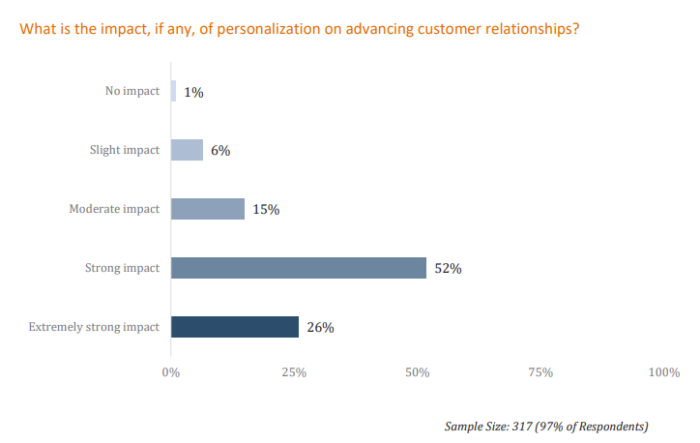
We’re not debating that personalization works.
Personalization helps marketers interact with a massive customer base in a way they have never been able to before.
They can use individual customer names, offer relevant products based on past purchases, and generally treat customers like the humans they are.
Even consumers are familiar with the power of personalization.
Gladly’s 2020 Customer Expectation report found that 84 percent of consumers will spend more with a brand that offers personalized customer service.
Before I start to sound like every other content writer talking about personalization in marketing , let me ask you a question.
Even though the above statistic says that consumers are more likely to buy when they receive personalized service, is that the best you can do?
In other words, just because people are more likely to buy from a marketer who uses their name versus a marketer who doesn’t, what about the marketer who does more than use name tags?
Wouldn’t that marketer win?
Sure, you can recognize your customers’ names. What if you also recognized their tendencies or wrote email copy like an actual human being instead of a business?
How much more impactful would that be?
The point is, maybe we’re using personalization wrong.
What is Real Personalization in Marketing?
When marketers talk about personalization, they are usually referring to name tags including the receiver’s name in their email campaigns, sending abandoned cart emails, or recommending products based on past purchases.
Things like this:
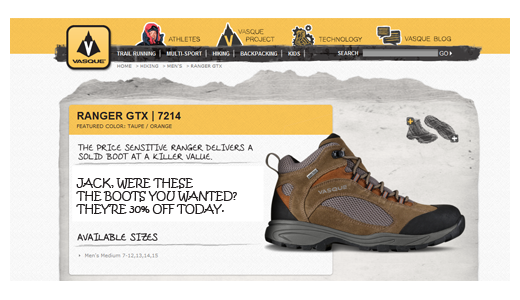
And ads like this:
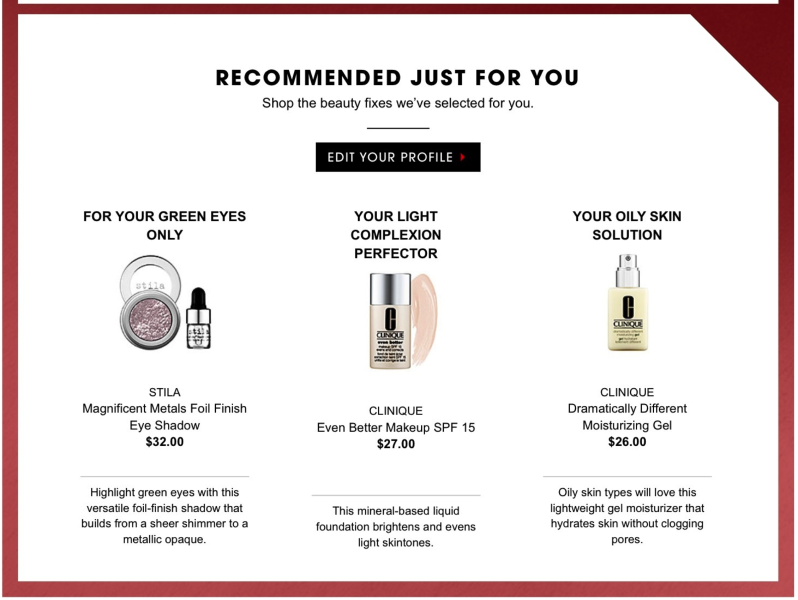
Here’s the thing about those methods. They don’t work.
That’s right. They don’t. At least, not that well.
OK, sure, sometimes a marketer will come along and experience a significant difference in their open rate, engagement rate, click-through rate, and conversion rate after adding someone’s name to their emails.
More often than not, those marketers are the minority.
Usually, the business that experiences that kind of personalization success has a massive audience with an already-loyal customer base to experiment on.
When they see a one or two percent jump in their conversion rate, it’s significant because of their hundreds of thousands of customers.
But it’s still only a one or two percent jump.
For you, that might not be so significant.
Regardless of the size of the business, though, marketers everywhere are prioritizing personalization.
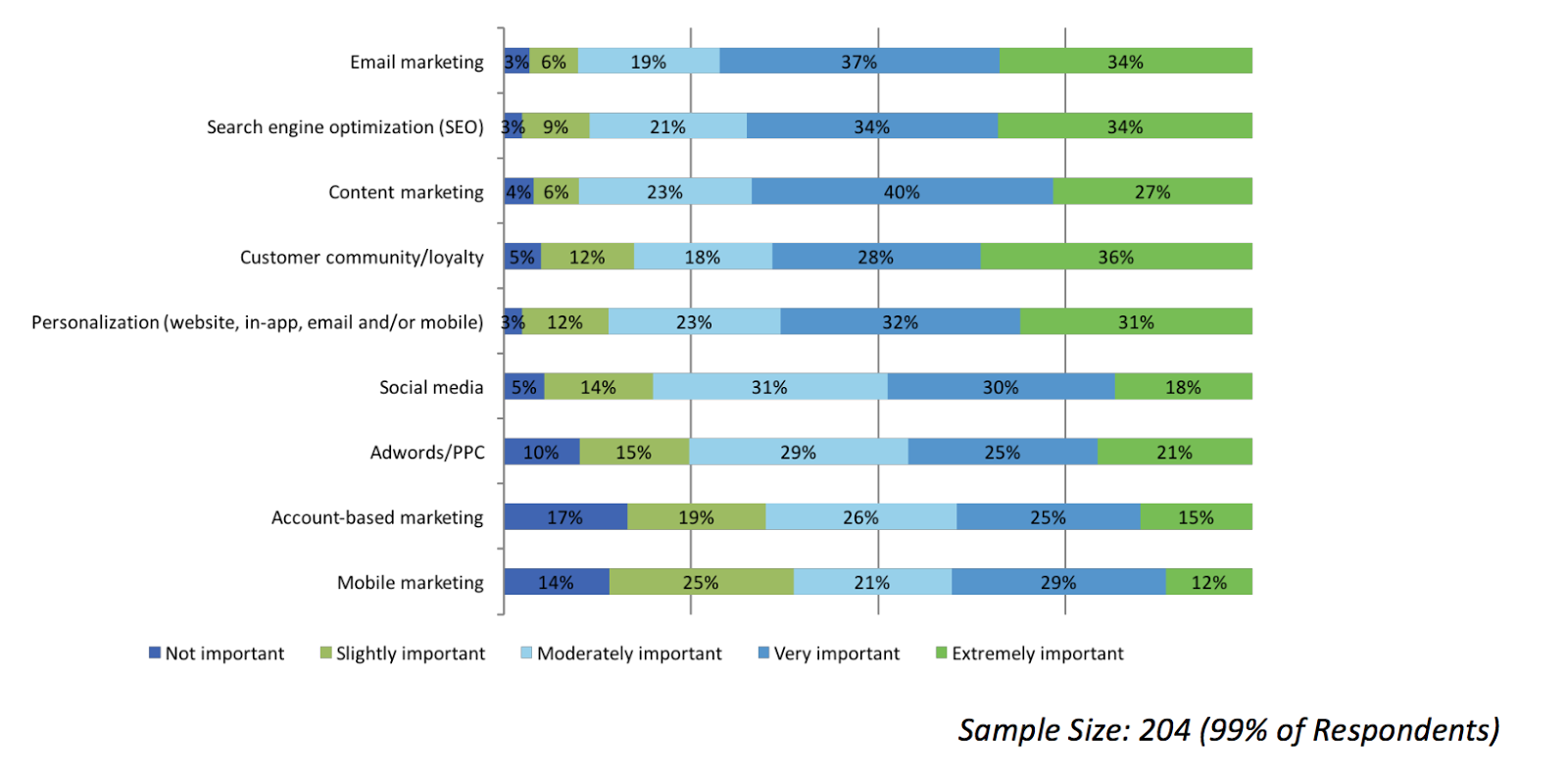
It’s hard to blame them when so many studies swear by the power of personalization.
But here’s what’s even more interesting. Only 31 percent of marketers think that they are using personalization right, and 69 percent think they aren’t.
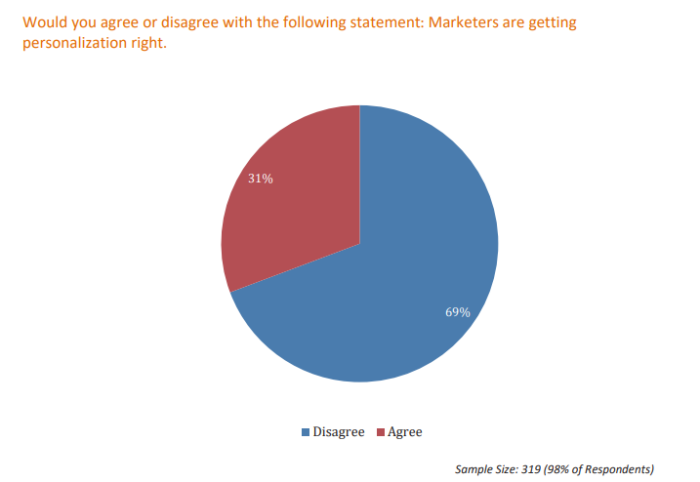
This means while marketers understand the importance of personalization, most don’t know how to do it effectively.
Here’s the point: Marketers know personalization is important, but they don’t know how to use it effectively.
If that is you, you’re probably trying to figure out what you are doing wrong.
That’s why you’re here, right?
In the end, personalization isn’t about using someone’s name or including recommended products. It’s about being authentic.
Welcome to the age of depersonalization.
Why Depersonalization is Far More Effective at Driving ROI
Let’s start with the question that’s on your mind.
What is depersonalization?
Well, it’s exactly what it sounds like.
It’s personalizing your marketing efforts by making them less personal.
I know that sounds confusing. Let me explain.
Imagine you received the following emails in your inbox. Which one would feel more personal?
Would it be this one?
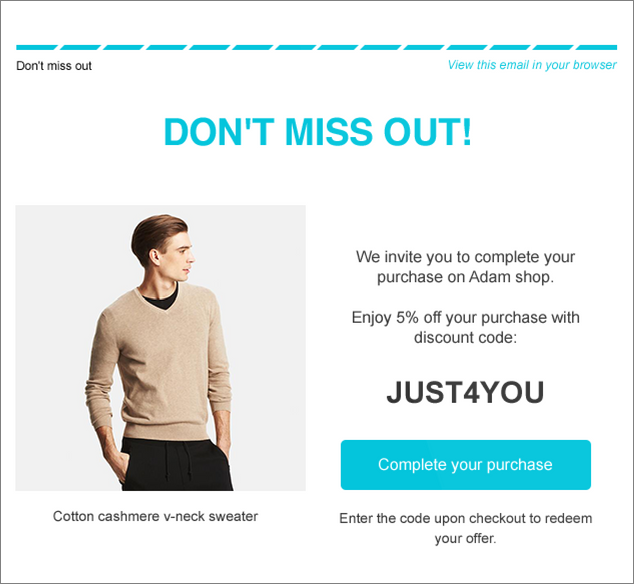
Or would it be this one?
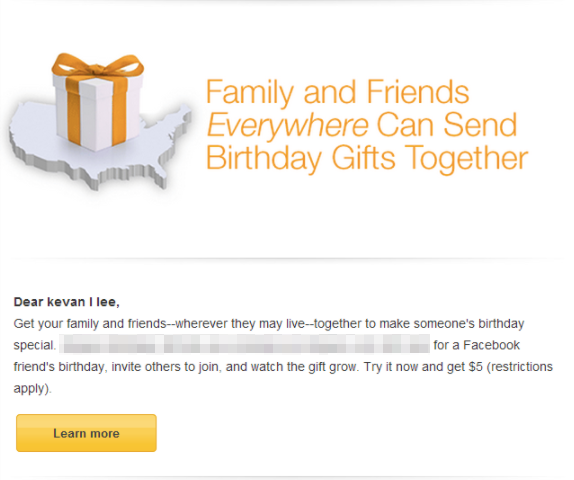
If you’re anything like most people, you said the first one.
Why does the first email feel more personal than the second one?
After all, the second uses the receiver’s name, and the first one doesn’t. They both offer discounts, but the second one includes a bit more detail.
Why, then, does the first one feel personal and the second one feels clunky?
Well, the answer is simple. The first one doesn’t try to be something that it isn’t.
The second email uses your name, but you already know that a robot sent the email. Just look at the capitalization.
It feels fake rather than building trust.
The first one, though, doesn’t include your name or try to act like it’s a human when everyone knows it isn’t. That makes the business feel more trustworthy and honest.
That is the power of depersonalization. In fact, here are six more ways you can depersonalize your marketing strategy.
1. Remove Name Tags From Emails and Add Transparency
I know. Practically every marketer and their dog insisits you’ll get a better click-through and response rate if you use your customers’ names.
They are wrong. (Well, mostly.)
The problem with using name tags to make your emails feel personalized is that it can have opposite effect.
Think about it.
Have you ever received an email from someone with your name on it and thought to yourself, “They didn’t send this email just to me. Who does this person think they’re tricking?”
Everyone knows your emails are going to a large group of people, not just them.
So using their name feels disingenuous.
Consider what Rachel Pedersen’s emails look like.
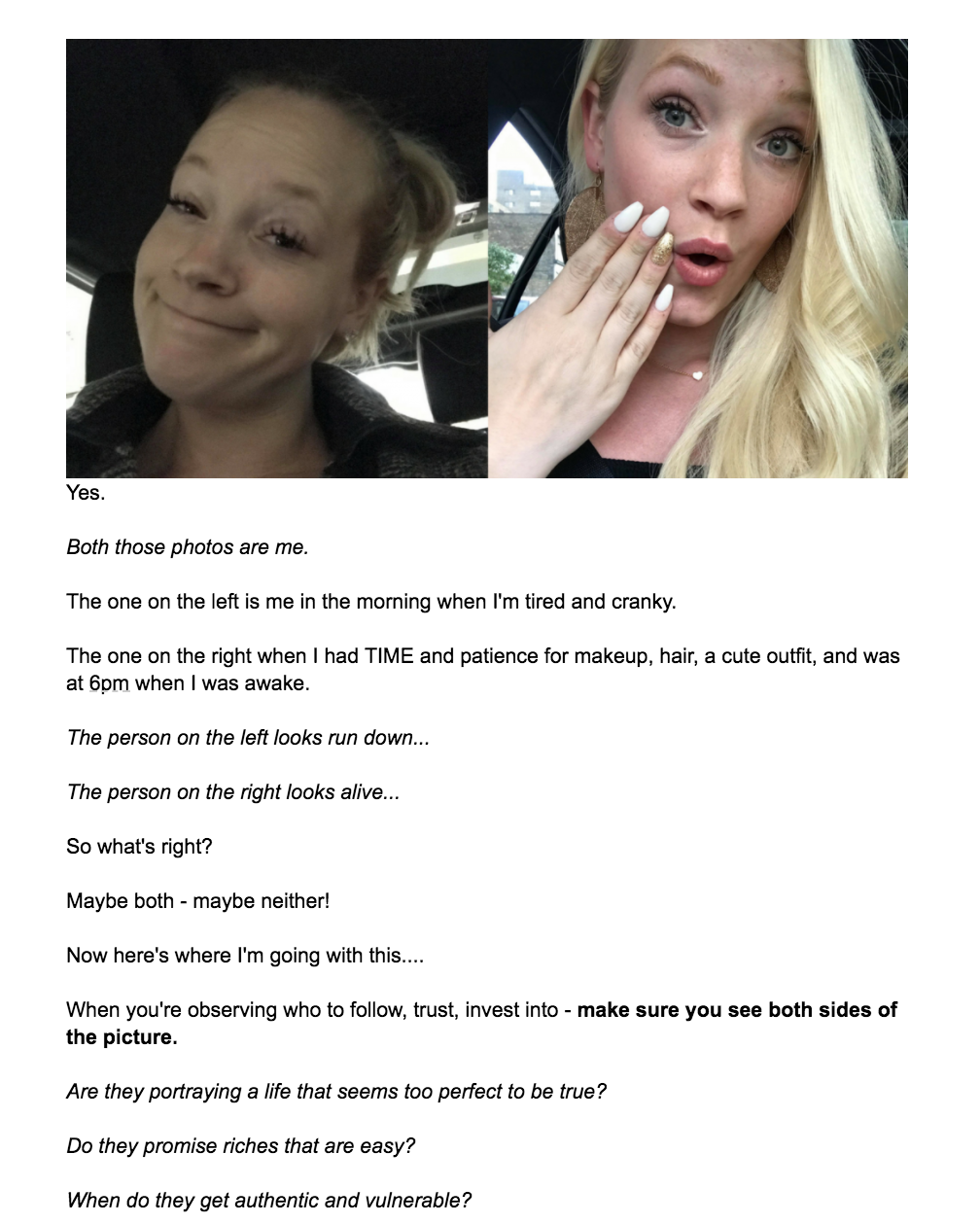
Nowhere in this email does she use my name. In fact, she never uses my name in any of her emails.
Why?
She knows that sending emails is more like speaking to a large crowd of people than talking to just a few in a small room.
You’re on a pedestal, so be on a pedestal.
Email, in particular, is one of the channels where marketers believe in personalization the most.
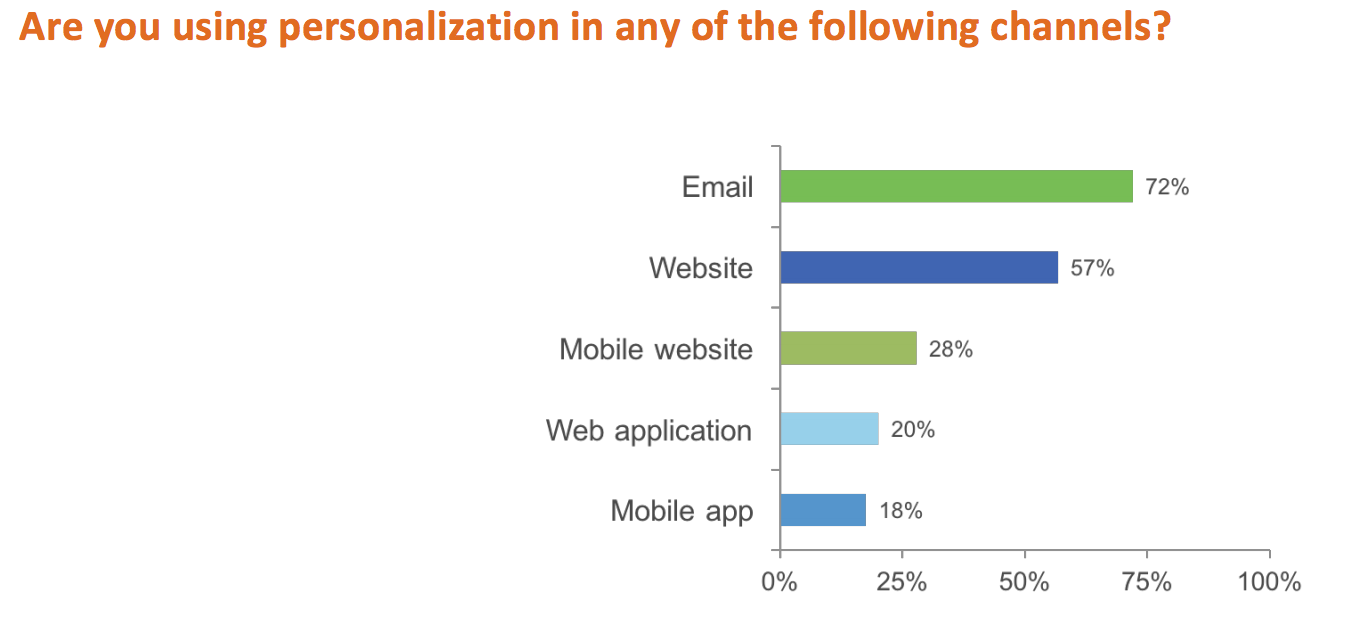
That’s exactly why we’re talking about it.
But here’s the thing about Rachel’s email above. While she doesn’t use my name, she uses other remarkable tactics to personalize the conversation.
Primarily, she’s transparent with her audience.
That’s far more effective than just adding someone’s name will ever be.
Here’s another email I received from her.
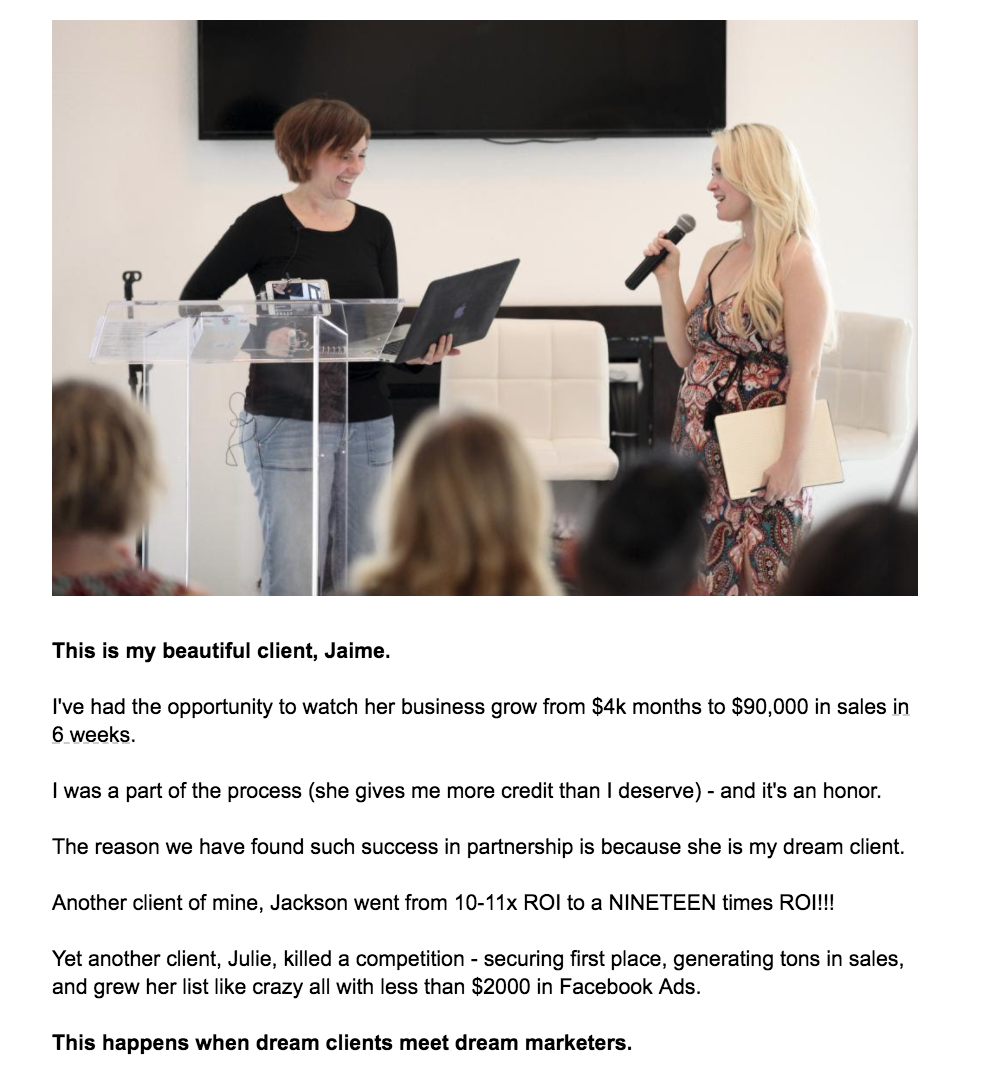
In this email, Rachel creates transparency with her audience by talking about how amazing one of her clients is and even mentioning that the client gives her more credit than she deserves.
You can practically smell the authenticity dripping from the email copy.
When people receive those kinds of messages, honesty baffles them and makes them more willing to trust you.
If you want to have that effect in your email campaigns, then ditch the name tags and talk about yourself with transparency.
Your listeners will appreciate it.
2. Provide Real Value Before Asking for Anything
Too many email campaigns try to take.
They ask the receiver to buy, give, or sacrifice.
Instead, email campaigns should provide value.
Now, I’m not saying that you should never ask your audience to do something. CTAs are important, after all.
What I am saying is don’t ask your audience to do something before you’ve provided a remarkable amount of value.
Consider, for instance, Michael Hyatt’s 20-to-1 rule,
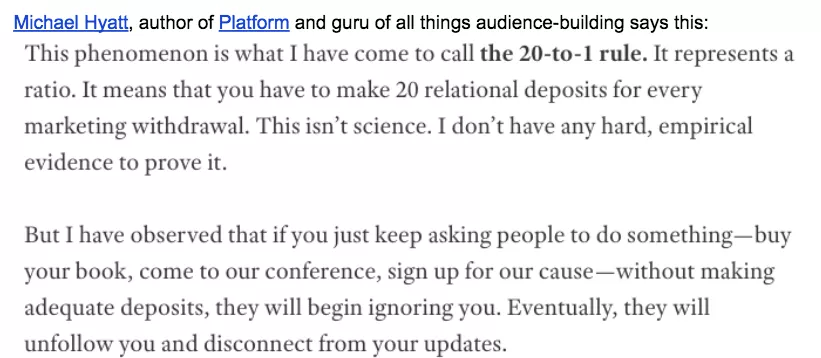
He claims you shouldn’t ask for anything until you’ve provided “deposited” 20 pieces of value.
That might sound like a lot, but you don’t have to follow the number exactly.
But his point stands.
Provide value before you ask your audience to buy, commit, or opt-in.
Ask yourself, “What would really woo my customers? How could I provide immense value to them?”
Then create a piece of content or downloadable worksheet with remarkable value.
Here’s another email from Rachel Pedersen where she provides value for the reader from the get-go.
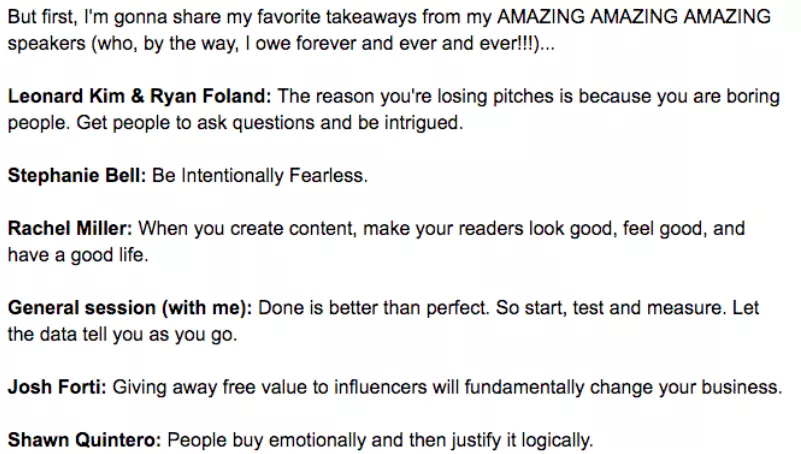
Also, consider this email I received from Trevor Mauch:
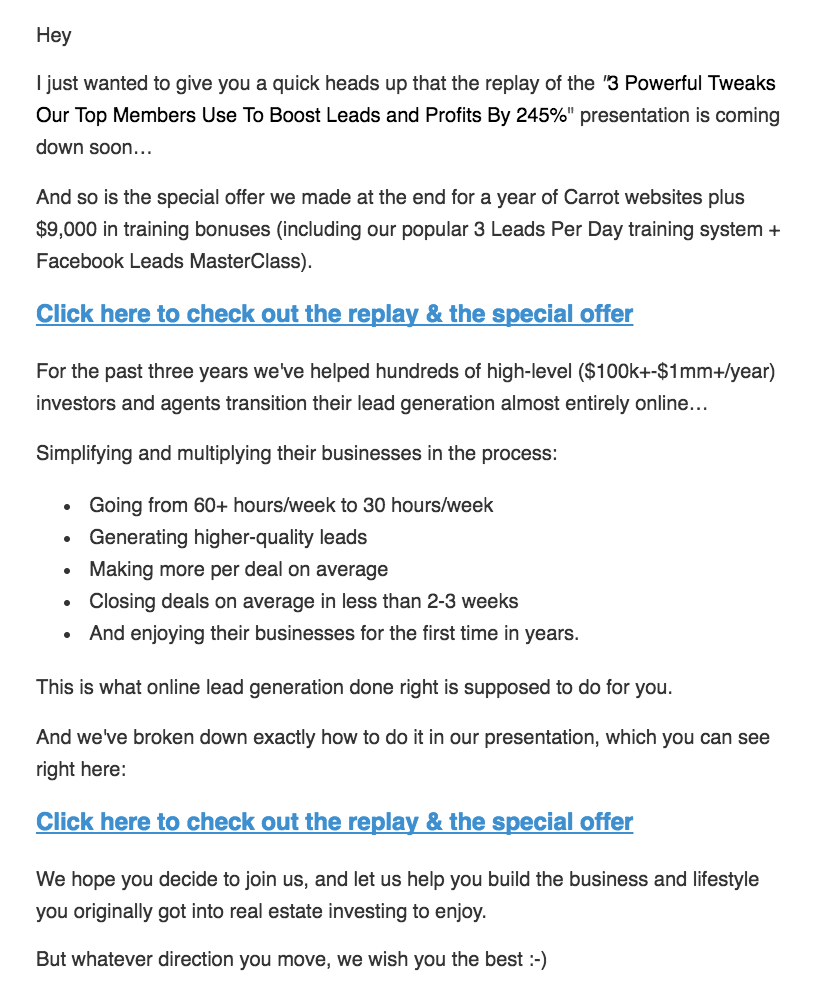
Or this email.
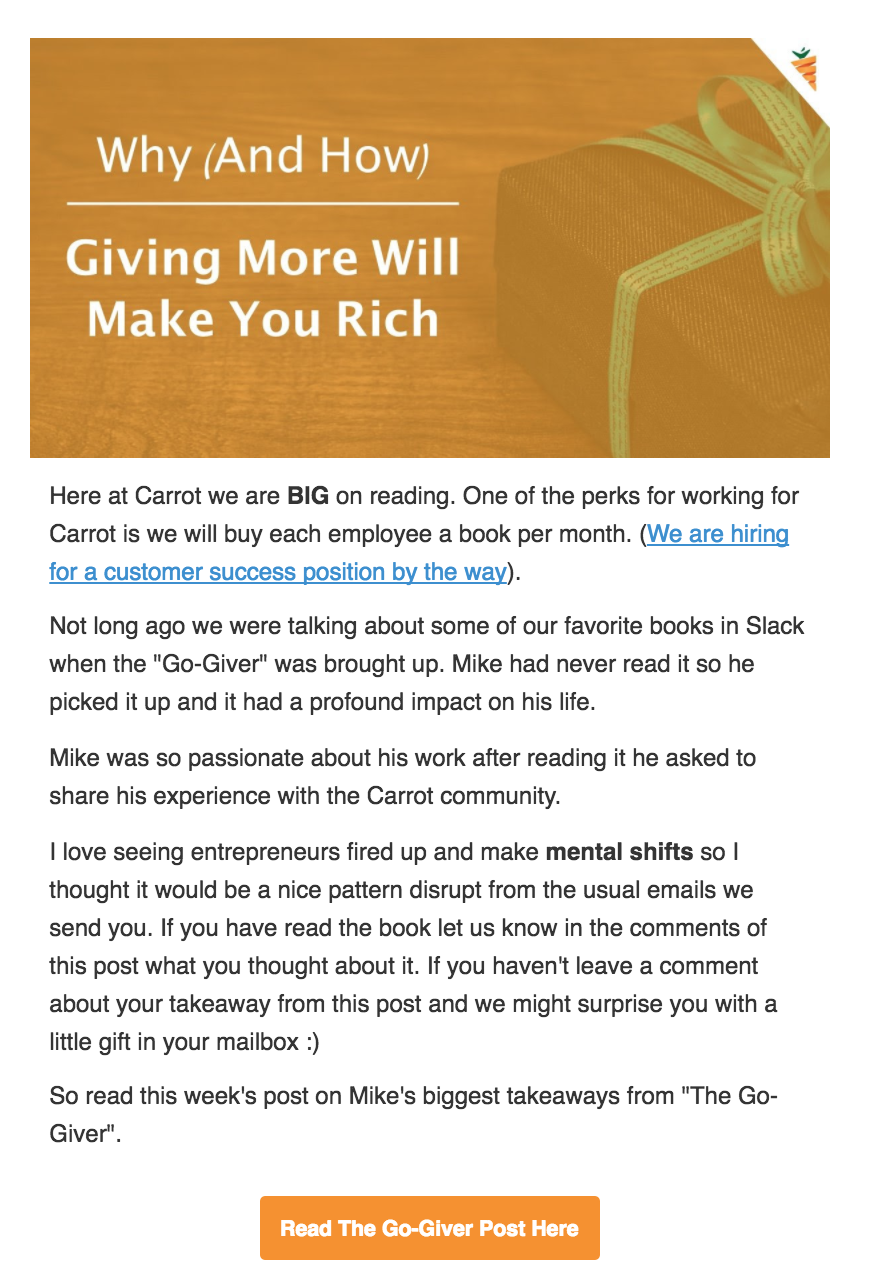
Do you see a pattern yet?
Each one of these emails provides value rather than demand a purchase.
They all initiate the customer-business relationship by giving something meaningful.
When they do ask for something, readers are more likely to respond.
After all, what goes around comes around, right?
4. Write Like a Real Person
There’s nothing worse than including someone’s name and recommended products but writing like a robot.
Unfortunately, an impersonal voice haunts most marketers’ attempts at personalization.
When that happens, receivers lose even more trust for the business.
In fact, it’s probably better to just do one or the other. Either write like a robot and remove the pretend personalization or only email one person at a time with authenticity.
Of course, neither of those options are very viable for an effective email strategy.
But there’s one other option.
Namely, remove the fake personalization but create real personalization by writing like the human being that you are.
The Hustle is one of my favorite newsletters for this very reason.
Here’s one of their emails.
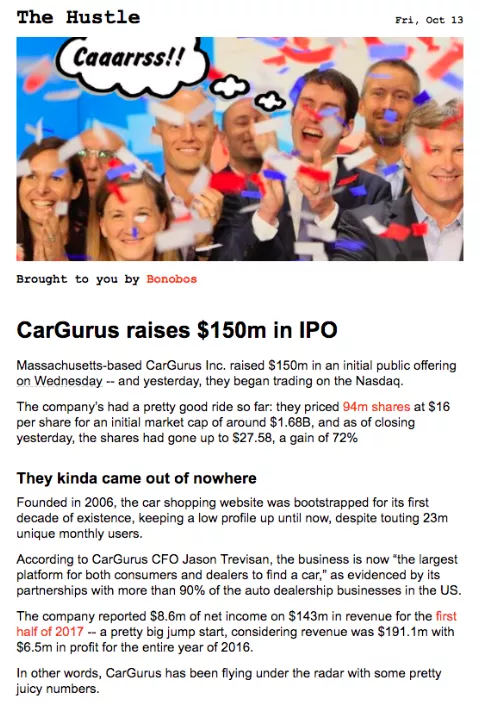
Here’s another one.
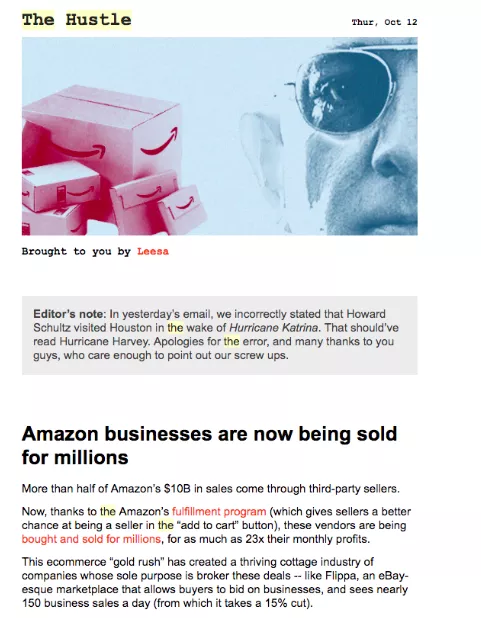
Although none of these emails include my name or try to sport a false sense of personalization, they do something else that’s far more powerful.
They use a consistent voice and a fun and distinguishable attitude to express their stories and ideas.
This makes their publication feel more personal, honest, and authentic than most newsletters.
You can use the same strategy to build trust with your receivers.
In other words, write like a human, and your content will attract people.
They’ll know if you’re faking it.
5. Focus on Existing Customers
It’s no secret that existing customers are more valuable than new customers.
They are more loyal and more profitable, and they generate more revenue.
For example, returning customers are 60 to 70 percent more likely to convert.
Plus, you don’t have to pay to acquire them.
But how do you turn old customers into new customers?
The secret might just be depersonalizing your marketing efforts.
Here’s what the upside-down funnel looks like.
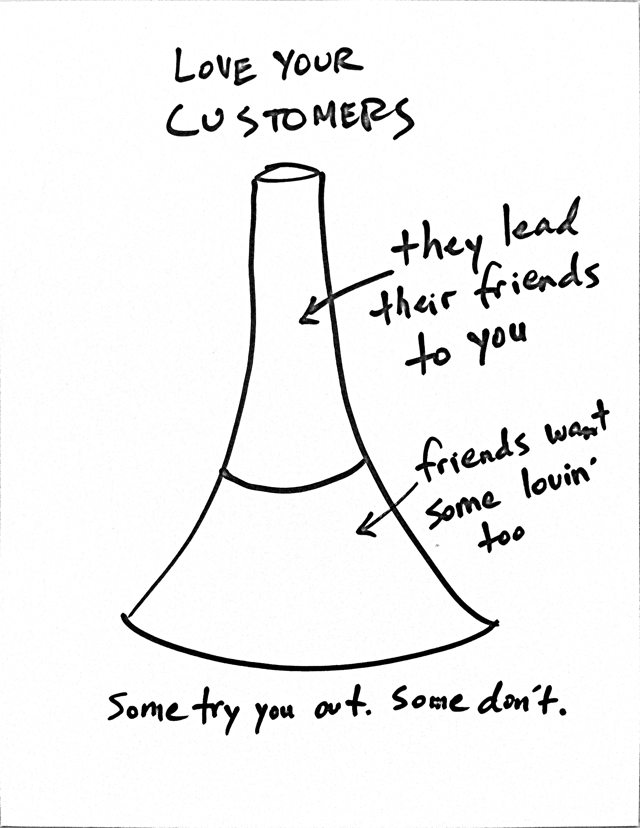
Essentially, when existing customers become evangelists for your business, they tell their friends.
Then, their friends become customers.
But how can you make that happen?
Well, personalization isn’t the answer.
Depersonalization is.
If you create marketing campaigns that build trust, express authenticity and transparency, and sound like a real person, you can make evangelists out of your existing customers.
When people feel like your business has a distinguishable voice and authentic personality, they will fall in love with you.
When they fall in love with you, they’ll tell their friends.
6. Really Listen to Your Audience
If you really want to add personalization to your marketing campaign by depersonalizing your efforts, then you have to listen to your audience.
No one knows your audience better than themselves.
Get in the habit of asking them questions and listening to their responses.
Plus, that’s one of the best ways to add personality to your emails without faking it.
Here’s an email I received from Scott Oldford:
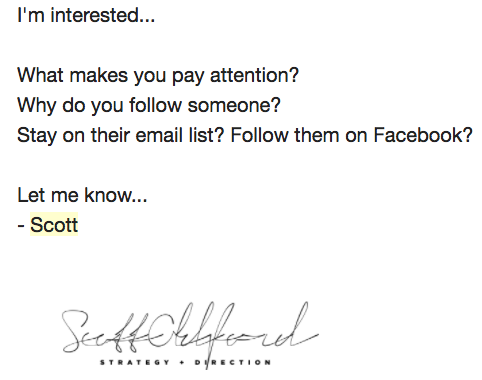
This email is wimple but wildly powerful. It simply asks a few questions and leaves it at that.
If you want people to respond, then don’t include anything else in the email. Just ask great questions.
Then, make a note of their answers, and you’ll find new ways to reach them.
Here’s another email I received from Scott:
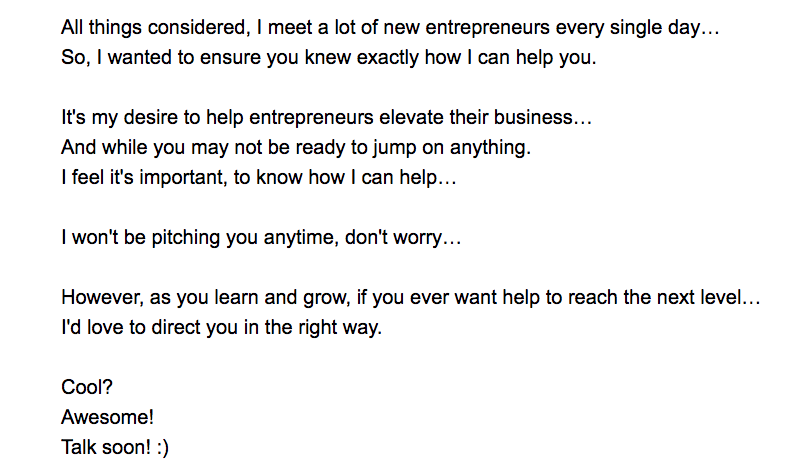
In this email, Scott prompts people to respond with ways that he can help them.
Nothing says “personalization” quite like a question.
And luckily for you and your marketing campaigns, asking your audience questions and listening to their answers is one of the easiest things for marketers to do.
Conclusion
There’s a lot of advice out there about personalization in marketing.
Some marketers recommend using a blue button instead of a red one, and other marketers recommend using red instead of blue.
It’s easy to get frustrated with so much conflicting advice.
The reason there are so many conflicting strategies is most personalization efforts only result in marginal gains.
Depersonalization, however, is effective.
When you remove name tags from your emails and add transparency, write like a real person, provide real value, focus on existing customers, and listen to your audience, you’ll generate leads and revenue like never before.
And it won’t be because your marketing campaigns feel personal, but because they are personal.
What personalization tactics do you use when reaching out to customers and prospects? Will you give depersonalization a try?
The post Why You Should Depersonalize Your Marketing in 2021 appeared first on Neil Patel.
from Neil Patel https://ift.tt/2pmkJEc
No comments